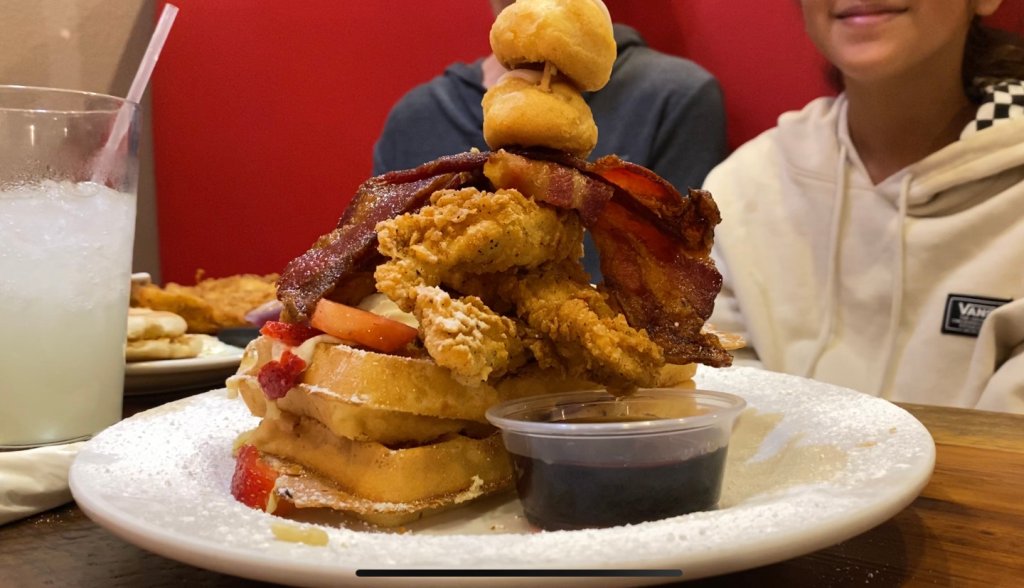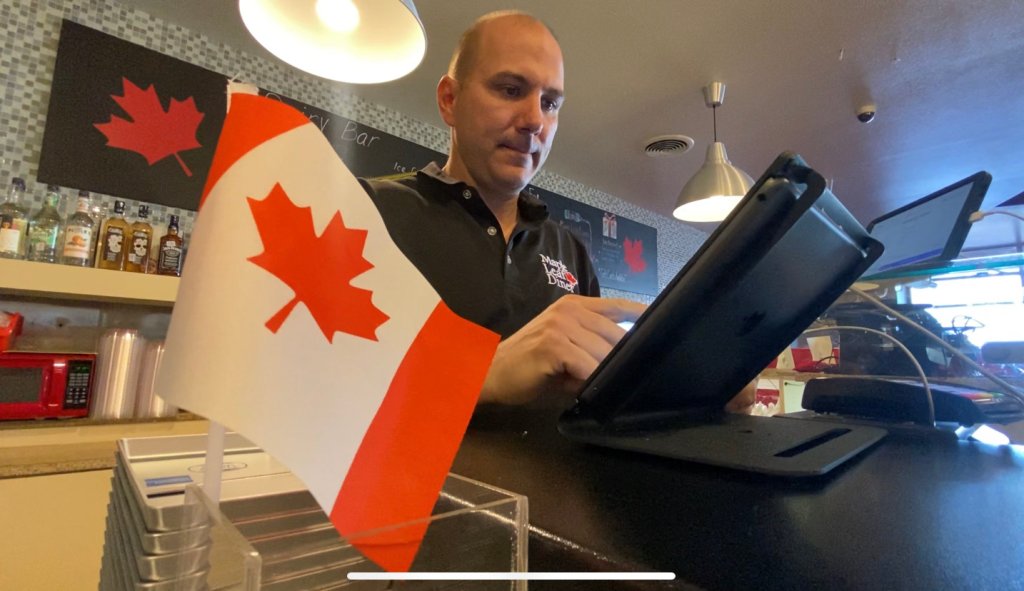Commercial Real Estate Is Booming – NBC 5 Dallas-Fort Worth
The real estate market in North Texas is hot.
But it’s not just about housing construction – experts say the frenzy we see when buying a home is also happening with commercial property.
Demand drives up costs from rent to construction.
“Prices are now at an all-time high,” said Chris Dharod, president of SSCP Management, based in Dallas. “A lot of money comes here from other cities because they want to own DFW real estate. For a long time, people wanted to buy California real estate. Now they want to own real estate in Texas. “
His company owns multiple shopping malls, apartment buildings, and other real estate holdings, so Dharod has been able to monitor the ever-changing market as the pandemic evolves over the past 18 months.
He said before COVID-19 disrupted the economy, the market was much more predictable and stable.
“At the start of the pandemic, many companies slowed down and completely frozen the growth they were going through. They stopped building restaurants, moving offices and building offices, “he said. “Since then, companies in most industries have rallied and prices are now at all-time highs.”
In many cases, commercial properties are now being sold well above the asking price.
“Prices have gone up so far and it’s pretty surprising how expensive real estate has got, especially in a market like DFW,” said Dharod. “At the moment there are properties for which a buyer pays a substantial part of the purchase price on the first day. I never saw this before the pandemic started. “
Certain segments of commercial real estate such as warehouse / industrial property are booming right now as e-commerce and online shopping have skyrocketed during the pandemic.
Local developer Holt Lunsford Commercial has just sold five commercial park properties in the Dallas-Fort Worth area to a Boston-based real estate group, according to the Dallas Morning News.
Companies are grabbing storage space and some have to wait a year or two to get it in parts of north Texas.
As inflation drives up raw material costs and demand drives up property values, local business owners need to get creative to stay afloat.
“Demand has increased and buyers have to be much more aggressive to get the property they want to buy,” said Dharod. “We are lucky that we are in such a hot market in DFW, where there is a lot of growth, there are many very well capitalized and qualified developers who are taking real estate to another level.”
Dharod said single pad retail sites are getting incredibly expensive and difficult to find. Raw land and demolitions are also in great demand. On the other hand, the demand for shopping center space is comparable to that of two years ago.
When it comes to office space, Dharod said demand at the DFW hasn’t changed much since the pandemic. However, some rooms charge more rent when the rental is extended.
“I think companies will use office space a little differently than they used to. There could be more flexible spaces where people can work from home one, two or three days a week and only be in the office every now and then.” ,” he said.
Overall, rising costs and high demand are weighing on companies that rent space, buy real estate or simply try to cover the rising operating costs.
“Many of these property owners are preparing for inflation. The other thing that has happened is that I think there are a number of companies that have a lot of money, ”Dharod continued. “They’re ready to spend that money and grow their business. So when you put these two factors together – businesses that can spend and property owners who know they can get more rents when demand picks up, that’s the result of development “an increase in rents and house prices.”
The National Association of Realtors has compiled a list of the top 10 commercial office markets of 2021. Half of the markets are in Texas and Florida.
Dharod said the high demand will continue for a while.
“I think the most important thing is the last 18 months that we have had a lot of changes and I think the pace of things will continue for the foreseeable future,” he said. “We will see companies that will continue to have to adapt very quickly to survive for the next 12 to 18 months.”
Adaptation to survival
Inflation, expected well into 2022, makes it more expensive than ever to run a business.
It is especially tough for those in the catering industry who prepare for difficult days.
The latest data from the Texas Restaurant Association revealed some insightful results from a survey of businesses across the state:
- 96% pay more for groceries
- 64% pay more for occupancy or rent
- 91% have much higher labor costs
No company seems immune to the fight, as the Maple Leaf Diner in Dallas can attest.
“It’s been a wild ride of constant change to ensure survival at this point,” said owner Mike Delaurier, who has been building the popular eatery at its Preston Road location for six years.
After a rough 2020, this year has brought back the amount of brunch customers and regular traffic the diner was used to.
“I think it’s good, it will definitely come back. Which is helpful with the costs involved, ”said Delaurier. “Without all these huge crowds, it would probably be catastrophic if our volume were much smaller.”
ABC 5
Mike Delaurier, owner of Maple Leaf Diner in Dallas.
The rising costs of running the restaurant, such as food and supplies, are another curve ball in the challenging 18 months.
“Our shortening, which we used to deep-fry our food, I paid $ 17 for a jug. It is now 42. So we’re not talking about small bumps. It’s more than twice as expensive and that’s just for the product to deep-fry my food, that’s not the actual food, ”he said. “Food costs are getting astronomical right now. Not just the cost, things are hard to come by. We’ve probably spent another 10 hours this week driving around town to get our products to serve. “
Recently the TRA released the latest information on the wholesale cost of groceries:
- A year ago a beef tenderloin cost a restaurant $ 100; today it’s 200 €.
- Cooking oil was $ 20 for five gallons, but it’s now $ 40.
- Chicken, which is very hard to come by, has gone from $ 3 a pound to $ 6 a pound.
- Flour is up 30%.
- Pork is up 27%.
- Eggs are up 40% now.
“To make matters worse, the Delta variant significantly reduced sales in dining rooms. 91% of our operators have confirmed that they have seen a decrease in traffic for dine-ins, “said Emily Williams Knight, TRA President and CEO, during a news conference earlier this month.

ABC 5
The cost of food and ingredients adds to the stress on the plates of local businesses.
Delaurier said he had panned as far as possible to make up for losses from the pandemic.
“This whole pandemic is basically an attrition. It’s able to handle the things that come with you and turn, “he said.
Some companies even had to adjust the cost of their products or menus to meet the rising costs.
“For me, a diner means value and not super expensive. So I am really struggling with these fees to try and keep these prices down without sacrificing quality. Because that’s a big deal for me, ”said Delaurier. “I know there are some places where different things are changed, different items and products are changed to make it inexpensive, but for me, I stand by the quality.”
Fortunately, Delaurier was able to negotiate his lease in 2020 for a good rental price. But other companies may not be as lucky now as rent increases have been in double digits this year compared to last year and costs continue to remain at record levels.
Either way, the TRA said companies are betting on the upcoming holiday season to get more revenue and hopefully a little more relief.
“Christmas time is a critical time of year for most restaurants, even in a good year, so our main message to the public today is please, please eat out,” Knight said. “Please buy a gift card at a restaurant.”
[ad_1]


